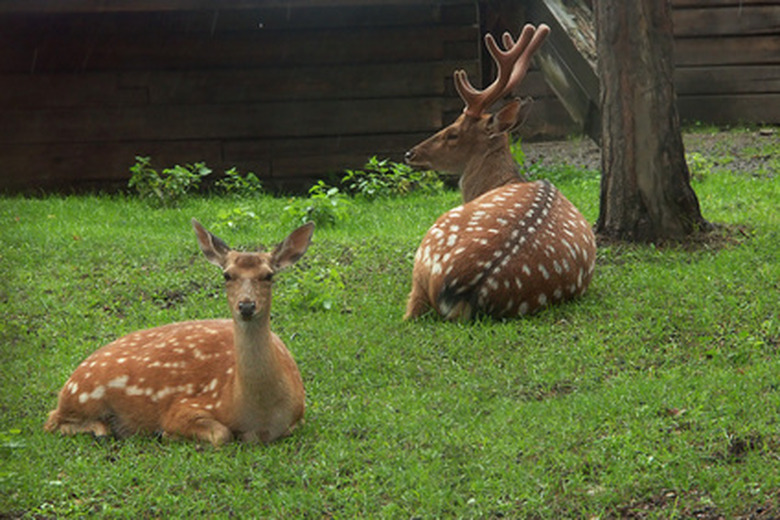Deer Resistant Arborvitae
Arborvitae tree species exist with a variety of deer resistance; choose the Western arborvitae for your home landscape if deer are common visitors. The American arborvitae is often damaged, but the Western arborvitae is less frequently bothered, according to University of Illinois Extension. Familiarize yourself with different cultivars and care requirements for a greater selection of arborvitae that will thrive in your home garden.
Ornamental Description
The Western arborvitae (Thuja plicata), also referred to as the giant arborvitae, is a large evergreen tree with a pyramidal shape. Displaying green needled foliage, Western arborvitaes grow to a height of 50 to 70 feet, according to University of Illinois Extension. These trees are often used in the home landscape as specimen plants or for privacy screening.
Care Requirements
Western arborvitae trees thrive in locations that offer full sunlight to partial shade. Plant in moist, well-drained soil for vigorous growth; tolerances include alkaline soil and wet conditions, according to University of Illinois Extension. However, excessively waterlogged soil and poor drainage may attract fungi that cause tree disease. For best growth, plant in U.S.Department of Agriculture plant hardiness zones 5 to 7.
- Arborvitae tree species exist with a variety of deer resistance; choose the Western arborvitae for your home landscape if deer are common visitors.
- Displaying green needled foliage, Western arborvitaes grow to a height of 50 to 70 feet, according to University of Illinois Extension.
Deer Resistant
According to a rating system developed by the Rutgers New Jersey Agricultural Experiment Station, Western arborvitae trees receive a grade of "C," which equals "occasionally severely damaged". A grade of "A" means "rarely damaged", "B" means "seldom severely damaged" and "D" means "frequently severely damaged". American arborvitae trees receive a letter grade of "D." When planting arborvitae trees in areas frequented by deer, choose the Western arborvitae for better resistance.
Cultivars
Western arborvitae cultivars include, but are not limited to, 'Cuprea,' a round dwarf tree that displays green needles with yellow tips, according to the Michigan State University Extension. 'Hogon' has a cone shape and grows up to 20 feet tall. 'Sunshine' displays gold-hued needles. 'Zebrina' is a tree with a pyramidal shape that produces variegated yellow needles and has an overall plant height of 30 feet.
- According to a rating system developed by the Rutgers New Jersey Agricultural Experiment Station, Western arborvitae trees receive a grade of "C," which equals "occasionally severely damaged".
- Western arborvitae cultivars include, but are not limited to, 'Cuprea,' a round dwarf tree that displays green needles with yellow tips, according to the Michigan State University Extension. '
Considerations
This deer resistant arborvitae tree is easily damaged by snow and icy conditions. Western arborvitaes may suffer mild damage or die. The main cause for injury is ice coverage that weighs down branches in combination with strong winds that result in snapped limbs. Additionally, the heavy weight of snow and ice damages plants by bending stems; though no breakage occurs, the internal health of the plant suffers permanent damage, leaving the tree deformed when snow and ice melts For control, remove snow from the tree by hand. For ice management, encircle the trees limbs to keep branches upright; University of Illinois Extension suggests using pantyhose to bind the tree because the nylon is a sturdy yet pliable fabric that resists decay and will not damage bark.
